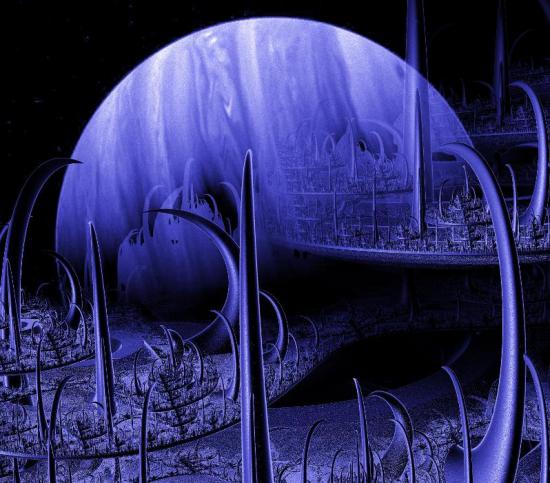BY LETTER
Fractal Architecture
 Image from Steve Bowers | |
| Popcorn City, an example of fractal architecture on a moon of the hydrojovian gas giant Aexion | |
A building or city constructed using fractal architecture incorporates a large number of self-similar structures, but in most cases the smallest structures are large enough to provide usable living or storage space. Some intelligent superobjects incorporate fractal designs and do not have to accomodate biont living spaces, and may incorporate very small fractal structures indeed.
Related Articles
- Fractal - Text by M. Alan Kazlev
An object with a fractal dimension. Fractals are self-similar and recursive; they may be deterministic or stochastic (random). They are important in creating rl-like virch-universes and simulations with only a relatively limited degree of processing. Many phenomena in nature have a fractal form - e.g. clouds, geographical features (coastlines, mountains, etc), snowflakes, plants, metabolic rhythms (e.g. heartbeat), economic cycles, and so on. Well-known fractals include the Cantor Set, Julia Set, and Mandelbrot Set. - Fractal Brotherhood, The
- Fractal Dimension - Text by M. Alan Kazlev
A fractional or non-integer dimension. A fractal may be more than a line (1 dimension) but less than a plane (2 dimensions), or alternatively more than a plane but less than a sphere (3 dimensions). Hence fractal dimensions are defined in terms of decimal or fractional numbers. There are a number of ways of computing a fractal dimension, including some unusual but popular algorithms employed by transingularitan intelligences. - Fractal Dyson
- Fractaroni Spaghetti Worms
Appears in Topics
Development Notes
Text by Steve Bowers
Initially published on 30 December 2010.
Initially published on 30 December 2010.






